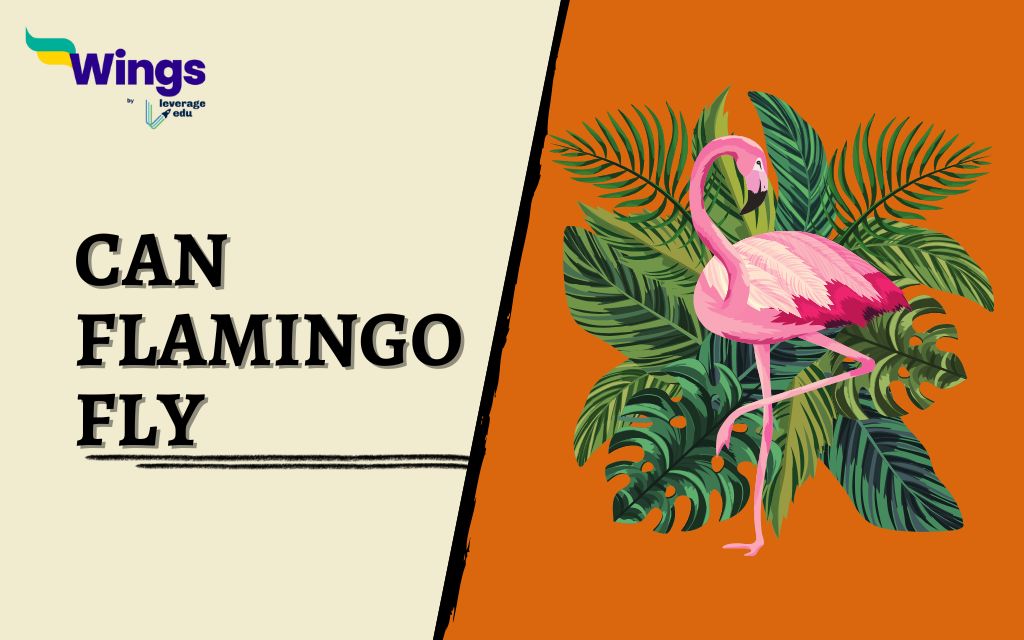Characterised by pink bodies, long slender necks, and a small head, flamingos are beautiful creatures of nature. However, their body structure often makes students ask questions like can flamingo fly? To your surprise, facts about flamingos tell us that their scientific name is Phoenicopteridae and these birds can actually fly. Moreover, they are generally seen in big groups which protect them against potential predators and dangers. In this blog, you will read more interesting facts about flamingos that may answer your questions like can flamingo fly or not. So, put your reading glasses on and let’s get started with the blog.
Contents
Can Flamingo Fly?
Owing to their large slender neck, many students often ask if a can flamingo fly or not. To your surprise, flamingos can fly easily. They are generally seen flying in a large group called a flamboyance to migrate to warmer and lower altitudes as seasons change.
They have a funny way of flying in which, unlike other birds, flamingo stretch their neck and head with their legs trailing behind.
| Particulars | Details |
| Scientific name | Phoenicopteridae |
| Group name | Flamboyance |
| Diet | Algae, small seeds, tiny crustaceans (like brine shrimp), fly larvae, and other plants and animals that live in shallow waters |
| Characteristics | Flamingos are known for their slender body, long legs, flexible neck, pink plumage, and a small head. |
| Predators | Lions, leopards, cheetahs, and jackals are the common predators of flamingos. |
| Lifespan | On average, flamingos can live up to 20 to 30 years. |
Amazing Facts About Flamingos for Kids
1. The word flamingo comes from the Latin and Spanish for fire, referring to their bright pink feathers.
2. There are six major species of flamingos. These are the Greater flamingo, Chilean flamingo, American flamingo, lesser flamingo, Andean flamingo and James’s flamingo.
3. The IUCN Red List of Threatened Species has listed Andean flamingos as vulnerable whereas the Chilean, lesser and James’s flamingos are listed as Near Threatened.
4. Caribbean flamingos are the biggest and the tallest flamingo species.
5. The neck of a flamingo contains 19 vertebrae, allowing them great flexibility to move their necks.
6. Flamingos feed with their heads turned upside down. They disturb the algae and larvae using their feet and then dip their heads under the water to gulp down the food.
7. Flamingos are monogamous, meaning they stay with one partner only.
8. Flamingo nests are made using mud with enough room to incubate one large egg.
9. A group of flaming is called a flamboyance.
10. Flamingos can stand on one foot for a long time which may be used to preserve body heat.
11. They can sleep while standing on one leg.
12. Flamingos’ plant and algae-rich diet gives them their signature pink colour. These plants are full of carotenoids which turn vegetables like carrots orange colour and tomatoes red. They are also found in the green growth of the saltwater. As flamingos eat this green growth and saline solution, their body turns pink.
Facts About Flamingo Chicks
1. Baby flamingos are born with white-grey feathers and straight bills.
2. The average size of flamingo chicks is about the size of a tennis ball.
3. After hatching, the chicks stay in the nest for 5 to 12 days.
Also Read: 19 Interesting Facts about Birds
Facts About Flamingo Beak
1. Adult flamingo beaks can be black, pink, or cream-coloured, depending on the species.
2. The bill is adapted to work as nature’s filter feeder.
3. The upper and lower bill is angled downward below the nostril.
Facts About Flamingo Habitat
1. Flamingos are generally found in shallow saltwater bodies.
2. They are found in tropical and subtropical areas, especially in parts of Africa, Asia, and Europe.
3. Some flamingo species can raise their young babies in extreme environments such as antacid or pop lakes.
4. Chilean, Andean, and James’s species of flamingos are found only in South America.
Also Read: 35+ Wild and Interesting Facts about Wildlife
Facts About Flamingo Diet
1. Flamingos eat algae, fly larvae, small seeds, and other plants and animals found in shallow waters.
2. Flamingos produce milk in a part of their throat called a crop. This highly nutritious liquid is brought to the mouth to feed the young chicks.
Interesting Reads
FAQs
5 facts about flamingos include that their scientific name is Phoenicopteridae, there are six major species, their necks have 19 vertebrae, they are monogamous, and lastly, they can stand and sleep on one leg.
Flamingos are best known for their pink plumage. Although baby flamingo chicks are born in a white and grey colour, their diet gradually turns them pink.
Flamingos are awesome and cool birds. Their pink plumage makes them stand out in the wild. Moreover, they are originally born with a greyish colour and gradually turn pink as they eat and grow up. Flamingos are so rich that many people use plastic ones to decorate their yards.
Hope you enjoy reading these amazing facts about flamingos. If you want to know more about topics like this, then visit our Interesting Facts and General Knowledge page!
 One app for all your study abroad needs
One app for all your study abroad needs














